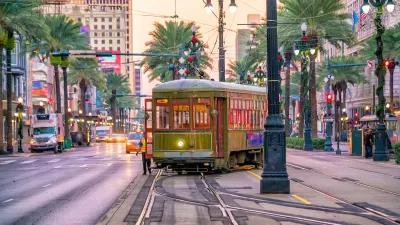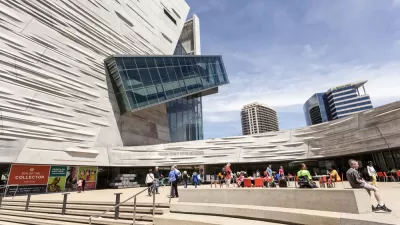Several Texas cities are using an AI-powered platform called NoTraffic to help manage traffic signals to increase safety and improve traffic flow.

Cities in the Dallas-Fort Worth metroplex are using AI to help manage traffic, reports the Dallas Morning News. Cities like Arlington, Dallas, Fort Worth, Garland, and McKinney are using a platform called NoTraffic, which uses AI to lengthen yellow lights and hold cross traffic if an approaching car isn’t slowing or to give a green light to police and emergency vehicles like ambulances or fire trucks.
“Variabilities in traffic patterns, particularly after the COVID-19 pandemic, are making it harder for planners to pin down peak hours and anticipate logjams ... With North Texas’ growing population bringing more traffic to city intersections, newer tech such as sensors can provide a more complete picture of traffic flows as they continue to change,” writes reporter Amber Gaudet.
Gaudet reports that Arlington will spend an estimated $1 million over the next two years for the technology, which will come from bond funds allocated for signal improvements.
In addition to the real-time signal changes, a local planner say the system provides greater access to data about “exactly what kind of traffic intersections gets,” which allows planners and public safety officials to better plan for and respond to changing conditions, and better plan for pedestrians as well. Tom Cooper, vice president of public sector sales for NoTraffic, told the Dallas Morning News, “Typically, transportation planning and technologies were set up to serve vehicles, yet we have this other population of pedestrians and bicyclists, underserved communities, that typically were not factored into that planning. Equity with transportation is also a major piece of what most agencies want to achieve, and these technologies can help them achieve those goals.”
FULL STORY: Dallas-Fort Worth cities turn to AI to cut down on traffic, accidents

Planetizen Federal Action Tracker
A weekly monitor of how Trump’s orders and actions are impacting planners and planning in America.

San Francisco's School District Spent $105M To Build Affordable Housing for Teachers — And That's Just the Beginning
SFUSD joins a growing list of school districts using their land holdings to address housing affordability challenges faced by their own employees.

The Tiny, Adorable $7,000 Car Turning Japan Onto EVs
The single seat Mibot charges from a regular plug as quickly as an iPad, and is about half the price of an average EV.

Seattle's Plan for Adopting Driverless Cars
Equity, safety, accessibility and affordability are front of mind as the city prepares for robotaxis and other autonomous vehicles.

As Trump Phases Out FEMA, Is It Time to Flee the Floodplains?
With less federal funding available for disaster relief efforts, the need to relocate at-risk communities is more urgent than ever.

With Protected Lanes, 460% More People Commute by Bike
For those needing more ammo, more data proving what we already knew is here.
Urban Design for Planners 1: Software Tools
This six-course series explores essential urban design concepts using open source software and equips planners with the tools they need to participate fully in the urban design process.
Planning for Universal Design
Learn the tools for implementing Universal Design in planning regulations.
Smith Gee Studio
City of Charlotte
City of Camden Redevelopment Agency
City of Astoria
Transportation Research & Education Center (TREC) at Portland State University
US High Speed Rail Association
City of Camden Redevelopment Agency
Municipality of Princeton (NJ)





























